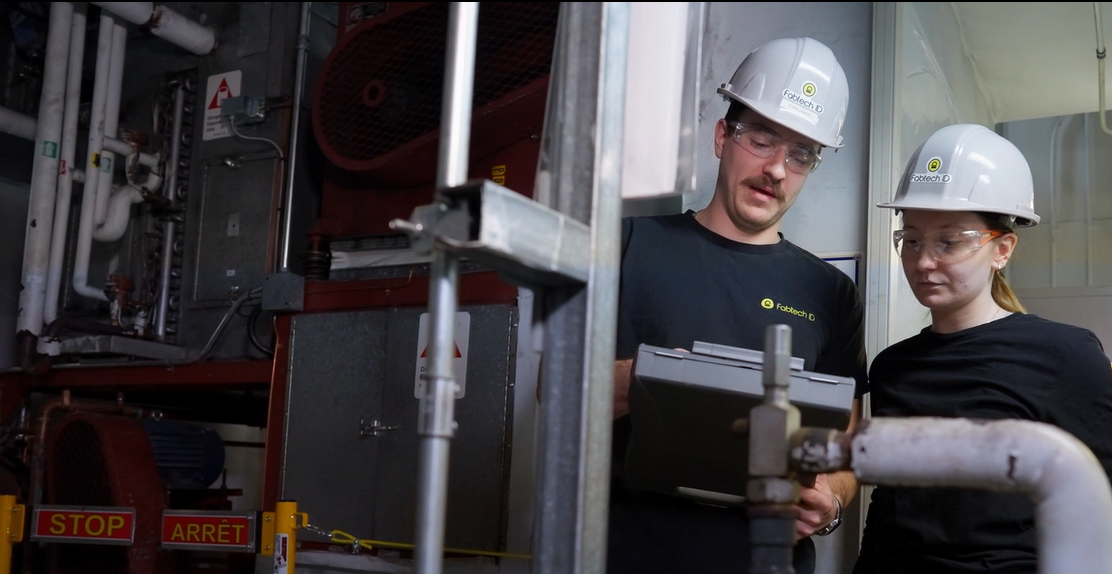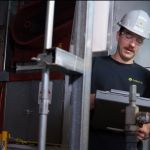

Peter is an EHS manager at a manufacturing plant. Following several incidents and a workplace accident where a team member lost a finger due to a lockout failure, he must now reassess the company’s lockout program. Lacking sufficient internal resources, he decides to hire an external firm to help him create a phased plan with a timeline to properly allocate budget and ensure compliance with standards.
As a professional in the EHS field, you know very well that a lockout project can quickly become a real headache. Estimating the budget to request is often difficult.
Evaluating the Scope of the Project
To assess the scope of the project, you need to gather some basic information: the number of pieces of equipment and the number of people involved in the lockout system. You also need to know how many departments there are and the risk level of each area.
The Steps
Where to start?
First, it’s essential to break down your plant or workplace into sectors. Once this is done, you must count the number of equipment items and employees per department, then start with the most hazardous sectors.
What to Prioritize?
There are two main categories of equipment: production equipment and service equipment. You need to list both.
It is recommended that all equipment requiring lockout be included in your lockout project. However, priority should go to equipment that directly impacts the resumption of production or that is locked out frequently. For example, if a plant’s ventilation system is defective and production must stop because the air becomes unbreathable—or even toxic—then even though this equipment is not part of the production line, it should be prioritized.
How to Plan the Lockout Budget? What’s the Execution Timeline?
One key takeaway is that lockout must comply with current standards. Unfortunately, it’s often only after an incident—or after an inspection from CNESST or OSHA—that companies are forced to take immediate action. This is when the lockout program becomes an “emergency.”
The essential responsibility of the employer is to exercise due diligence. This means taking all necessary precautions to protect worker health and safety.
For example, if during an inspection it’s determined that the lockout system for machine B-48 is non-compliant, I can defend myself with an established plan that spans, say, two years, broken down into phases. If machine B-48 is included in that plan, I am demonstrating due diligence. I’m actively working on improvement. The key is to have a plan—and to follow it. An inspector may verify whether you’re actually implementing the plan. If your plan states that by this date you should have X number of lockout procedures completed, they’ll check to confirm.
It All Comes Down to Common Sense
If an inspector visits and says you need 2,000 lockout procedures immediately—this isn’t true in practice. A lockout procedure only needs to exist before work begins. So, if maintenance is scheduled in 20 days for equipment 2-A, you have 20 days to prepare it. That’s why prioritization is crucial.
A Major Challenge: Budget Planning
The lockout system is a “living” system, meaning it is never truly complete. Materials must be constantly replaced or added—such as lockout boxes, individual padlocks (due to staff turnover), equipment tags, lost keys, etc. Additionally, the budget must include training for new employees.
Who Manages the Lockout Project?
Another major issue is determining who is responsible for managing the project. In many organizations, internal teams don’t have the time or budget to take it on.
It is therefore recommended to outsource the priority production equipment or systems that require frequent maintenance.
Service equipment, on the other hand, doesn’t typically require urgent action and can be handled internally when breakdowns or maintenance occur.
However, the “validation” portion must be managed by the organization. The operator—your internal expert—should validate the work completed by the external firm. For example: Is the lockout procedure for machine B-12 compliant and safe?
Key Takeaway
As you’ve read, estimating a lockout project can be lengthy and labor-intensive. To reduce pressure on your internal team, Fabtech ID recommends working with an external firm. That way, you ensure the project progresses—because a dedicated team is working on it with priority.
Don’t wait for an accident to happen—because remember… a lockout accident is always serious!
Are you ready to start your lockout project but still have some questions?
Would you like coaching?
Do you need to revise your training plan for internal trainers?
Fabtech ID will be happy to guide you.
Contact us today by filling out our contact form!







